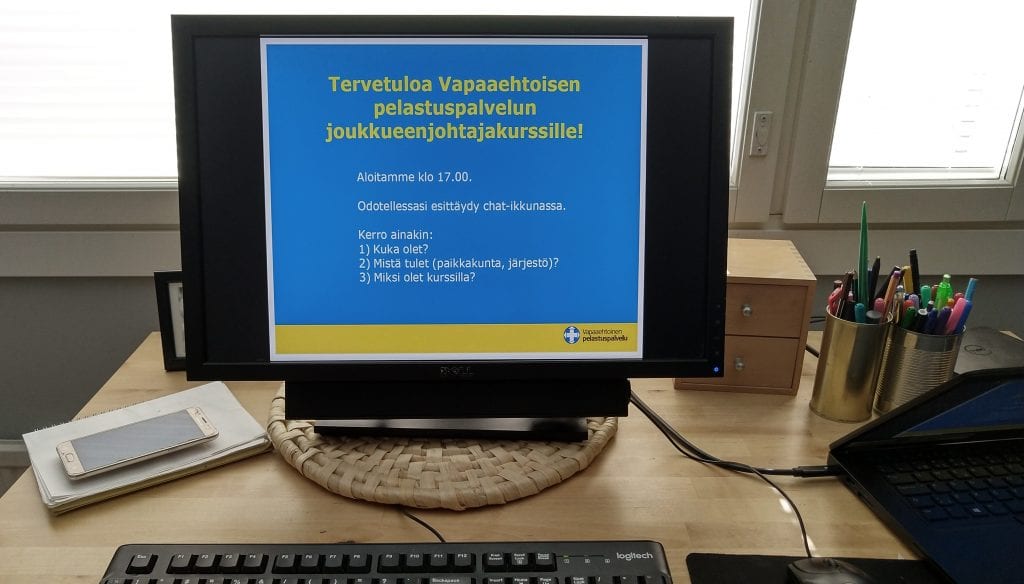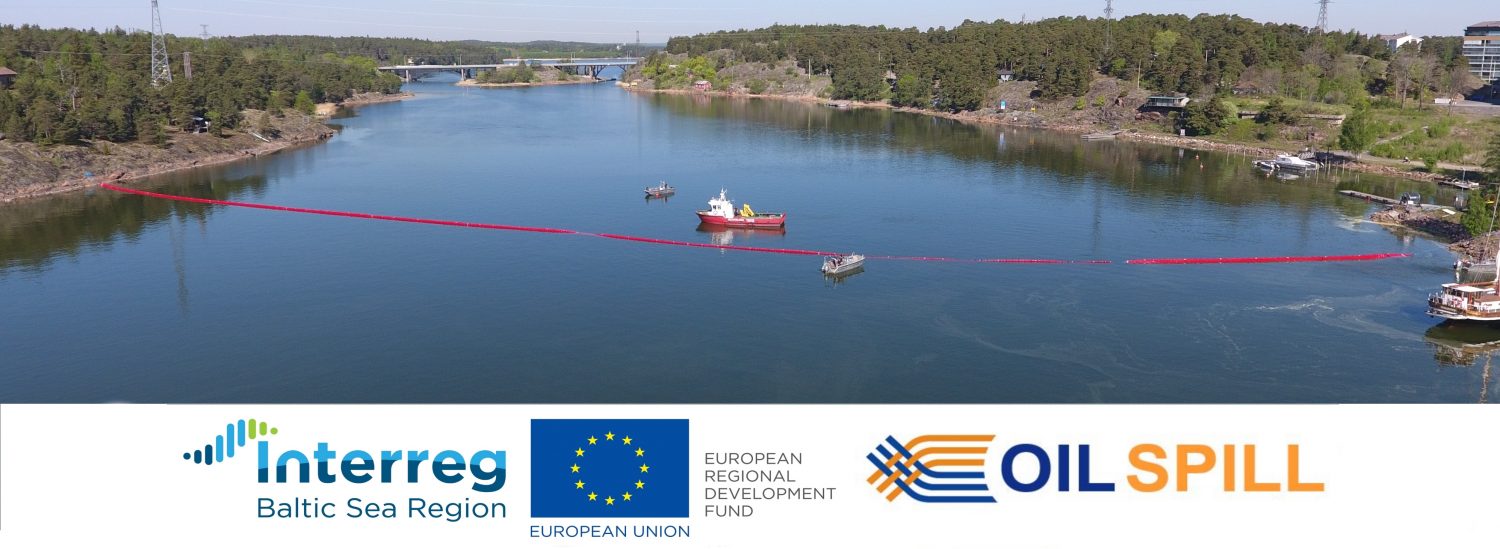Heta Hyvärinen: Organizing Troop Leader Course Online – Lessons Learned

Text: Heta Hyvärinen, Project Officer, Finnish Red Cross
This spring, most events had to be canceled or postponed, which led us to find new ways to work. Together with WWF Finland, we decided to give a chance to an online troop leader course. In this blog post, I share some lessons learned from this experience, and encourage you to do something similar – if you have not done so already!
Background
Voluntary Rescue Service is a network of 53 NGOs in Finland. It helps authorities with different emergency tasks and is coordinated by the Finnish Red Cross. Voluntary Rescue Service is currently developing its training program, especially leadership training, in a way that there will be three levels of skills: 1) trainee / basic courses 2) group and/or troop leader, and 3) voluntary leader / top position leader.
The troop leaders might be needed in large and long-lasting disasters – such as a massive oil spill – in which many volunteers are required. Luckily, these accidents are rare, but when the need occurs, the leaders have to have up-to-date expertise and skills.
The two-day (16 hours) oil spill response training for troop leaders was first developed during the previous, national oil spill project. After the training, the participants know the tasks, responsibilities, and duties of a troop leader and the situation view and situation awareness as concepts. They also know how to work with media, the practices with insurances as well as how to receive volunteers and establish a troop. Eventually, they have the expertise to lead a troop consisting of 2–10 groups of volunteers safely in an operational situation.
The training scheme is currently under development, but in the following, I summarize the contents of a live training that was organized in Oulu, Finland, in November 2019:
Day 1: the tasks of a troop leader; establishing a troop; situational awareness and building the situation view; media and insurance instructions of Voluntary Rescue Service; working as a troop leader; and leading safety.
Day 2: legal aspects and instructions related to oil spill response at the shore; organization, tasks, and roles at oil spill response (view from the authorities representative); quick training method of WWF Finland (including work safety and health issues); scouting the spreading of oil; logistics, and; a leadership exercise.
We considered that the first day is challenging but possible to organize online, whereas the more practical second day is not.
Before the online training
First, I contacted the trainers that I had worked with in November, and all of them were happy to try the same online. We set the dates for May 2020, and decided to organize two 3-hour webinars with lectures and different participatory methods (chat, Mentimeter, and Padlet).
I advertised the course on the webpage of Voluntary Rescue Service and sent a request to the Chiefs of Preparedness in the 12 district offices of the Finnish Red Cross. In only two weeks, we had 33 participants from different NGOs registered – three times more than in the face-to-face training! Of course, the volunteers had more time now since other activities were canceled, but it we had also emphasized that the course is for everyone interested in leading voluntary troops, not only for volunteers in oil spill response.
I sent a welcome letter with practical information to the participants before the event. Normally, it includes “how to get there” instructions, but now I instructed how to use Teams, how to enter the meeting, and how to act during the webinar. The homework was the same as before: Familiarize yourself with and compare the mission, vision, values, and principles of Vapepa and your home organization and think how they fit into your own values and principles as a leader.
Lessons learned during the webinars
First of all, it was essential to revise the rules at the beginning of the training. For instance, we advised the participants to keep their microphones off to avoid echoes and write “floor” in the chatbox whenever they wanted to be given permission to speak.
Secondly, another way for participants to get the floor was to write their thoughts in the chatbox. In both cases, it turned out to be useful to have one trainer following the chat.
Thirdly, I had sent the timetable to the trainers of different sections. I advised them to use another device to follow their notes because it is not possible to read another document while sharing your presentation on the same computer. The trainers also signed in 30-45 minutes before the webinar to discuss the last-minute issues.
Fourthly, I shared the first slide 15 minutes before the training started. It was about welcoming the participants and asking them to introduce themselves in the chatbox by answering three simple questions: 1) Who are you?, 2) Where do you come from (city/town and organization)? 3) Why are you participating in this course? Because most participants entered the meeting early, this act saved time and we could go directly to the point instead of waiting for everyone to present themselves.
Fifthly, unfortunately, I faced many technical problems during the first webinar! Now and then, my connection was lost: I might drop off the call or not be able to share my screen, and the quality of my voice was occasionally really bad… This webinar was my first as a trainer and responsible for the whole course, so I was quite upset about the challenges. Fortunately, the other trainers helped by being flexible and sharing presentations from their screen. So, if possible, arrange a webinar from your workplace to avoid technical problems that might occur at home. Now, it just was not possible due to the lockdown.
Finally, it is important to collect feedback from the participants and have a wrap-up meeting with the trainers and go through the feedback. Generally, the feedback for the webinars was positive, but we also had a few very critical but honest comments to learn from.
The volunteers and leaders on board were very experienced this time, and we could have given more floor to them. So, adjust your course according to the participants! Let them share their experience by stepping more into the role of a host instead of an expert. Also, trying new methods, such as Mentimeter and Padlet, was fun – we are going to use them in the “normal” training, too.
However, as many participants mentioned: you cannot become a leader online – you need also live training to be able to apply your theoretical knowledge into actions and see how other people react. Indeed, giving and receiving feedback is an essential part of leadership – not to mention creating a good atmosphere among the group, which is a lot more difficult online.
We really hope that we can see each other soon at live meetings, trainings and exercises, and share the best practices face-to-face! However, we agreed that also online training is useful, and we will arrange more of them in the future.


Leave a Reply